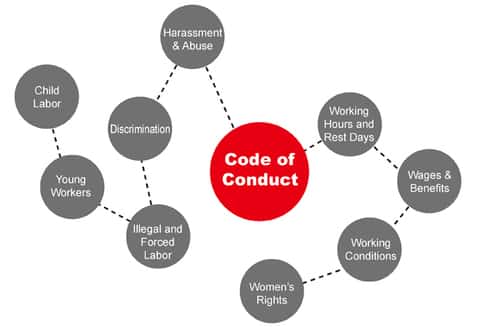Social compliance audits are one of the audits that are important for importers to think about and conduct. these audits don’t look into your suppliers’ technical ability, rather they look into whether they’re abiding by the law, whether they are following good health and safety practices for staff and whether they’re engaging in shady business practices, which are going to get you or your brand into trouble down the line.

What Are The Key Factors In Social Compliance Audit?
A social compliance audit is about going to the factory and looking at certain things, talking to people a lot, and trying to see how the stuff is treated. looking at certain records like paper or IT records. it’s not about physical things like a process audit or quality audit. this is much more about the human side of the manufacturing business. certain things are the very big things that no buyer wants to be associated with, they don’t want to buy products that are made or in part or fully made in a facility.
1.Child Labor & Forced Labor
For example, child labor is something that can explode in their face and tarnish their brand. the second very big one is forced labor. you can include a lot of things under false labor. a lot of other things would be associated. such as the workers come and they have to provide a deposit for their safety shoes. or the workers arrive, they start to work and their id cards are taken confiscated, one might say. when they make a mistake, there’s a penalty deducted from their salary.
2.Health & Safety
Another one is health and safety. nobody wants to work with a factory that has severe work accidents every month or even every year. they just don’t know about it. but when you go there and you see some dangerous working conditions, you have to report it. the brands are very often insulated from this because the last steps are done by their direct suppliers tend to be the finishing, the assembly, and the packing. that’s not very risky, but as you go up the supply chain and you go into metal machining and die casting. or you go up in textile. many problems for textile companies when it comes to server compliance. it’s bad when you go up the supply chain then you see the dying meals and all the bad stuff they release into the environment. that’s not health and safety. and you could say it’s also the health of the people living in the community, in some other cases, it is the health of the workers when there’s a lot of fumes and things like that in the air. health and safety are very often horrible in a lot of developing countries. when you look at the multinational companies that have a strong policy about all this, it’s the same in their overseas factory operations. they’re very careful with safety, especially in sectors like oil, gas, and automotive. they’re very careful and apply the same standards worldwide. it cost a little bit more in the end.
3.Working Hours
there are a few things like this that are big, then there are some other things that are in the standards considered given too much importance. for example, the number of labor hours and rest days. nobody wants to work with a sweatshop where people are working 14 hours a day, sometimes seven days a week. but the situation is a little bit complex, that’s something consumers might not understand, sometimes the workers want to work harder and earn more.
What Is The Best Way To Find The Supplier That Suited You The Most?
Sometimes you find that maybe the supplier is on a very small scale, they don’t even have a labor contract with the staff or any safety precautions. it’s like level zero, something bad could happen here because they don’t have any systems. you don’t have any way of actually preventing bad stuff from happening, but like on the other hand, you’re working with a white page, and you can help them get better over time if they cooperate, it goes both ways good to have the information. but it’s not good to put a lot of pressure and make it conditional in a certain grade or on a standard that they can’t satisfy, because you might just be forcing them to do all the paperwork, but not improved, know their limitations.